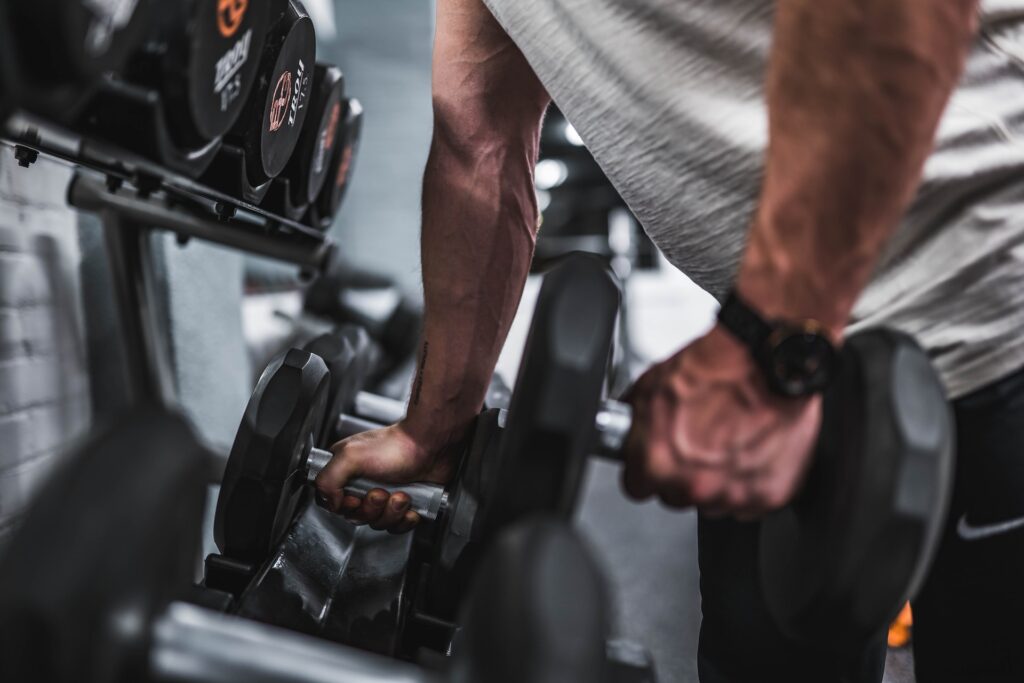
Boost Testosterone and Optimize Health: eTRT, Fitness, and Nutrition Strategies
Low testosterone (Low T) can significantly impact men’s lives, affecting their physical, emotional, and sexual health. While telehealth testosterone therapy, such as RISE Men’s Health’s eTRT program, offers an effective approach to addressing Low T, combining medical treatments with fitness and nutrition strategies can optimize treatment outcomes and improve overall health.
In this blog article, we delve into the importance of adopting a holistic approach when managing Low T and explore how eTRT, paired with fitness and nutrition, can help boost testosterone levels and enhance overall well-being. Offering comprehensive insights into the role and benefits of eTRT, fitness, and nutrition, we aim to empower men to take control of their health and overcome the challenges presented by Low T.
Through this exploration of eTRT, fitness, and nutrition, we provide an educational resource for men seeking guidance and solutions to manage Low T and take a holistic approach to improving their health.
The Power of Combination: eTRT, Fitness, and Nutrition for Managing Low T
When managing Low T, a comprehensive approach combining eTRT, fitness, and nutrition can yield more significant results than focusing on a single aspect. RISE Men’s Health’s eTRT program offers an innovative telehealth solution for addressing Low T. However, integrating targeted fitness and nutrition strategies can further optimize treatment outcomes and promote overall health and well-being. By understanding the synergistic potential of these combined approaches, men can devise a personalized plan to boost testosterone levels and enhance their quality of life.
Exercise and Testosterone: How Physical Activity Can Boost Hormone Levels
Regular physical activity plays a crucial role in supporting optimum testosterone levels. Studies show that both moderate and high-intensity exercises can help boost testosterone production and alleviate some symptoms associated with Low T. Here are some key points to keep in mind when incorporating exercise into a Low T management plan:
- Strength Training: Resistance training, such as lifting weights or using resistance bands, can positively impact testosterone levels. Incorporating compound exercises, like squats, deadlifts, and bench presses, can provide the most significant hormonal benefits.
- Cardiovascular Activities: Moderate-intensity aerobic exercises, like jogging, swimming, or cycling, can support cardiovascular health while also promoting testosterone production.
- Rest and Recovery: Overtraining can negatively affect hormone levels and hinder progress. It is essential to prioritize rest and recovery to ensure that workouts remain beneficial.
To maximize the benefits of exercise on testosterone levels, consider working with a fitness professional to design a personalized workout plan tailored to your unique needs and goals.
Hormone-Friendly Foods: Dietary Choices That Impact Testosterone Production
Nutrition is another critical factor in managing Low T and maintaining optimal testosterone levels. A well-balanced diet that fuels the body with the necessary nutrients can support hormone production, overall health, and well-being. Some dietary choices that can positively impact testosterone levels include:
- Healthy Fats: Monounsaturated and polyunsaturated fats, found in foods like avocados, nuts, seeds, and fatty fish, are essential for hormone production. Incorporating these healthy fat sources into meals can help support testosterone levels.
- Lean Proteins: Consuming high-quality proteins, such as lean meats, poultry, fish, and plant-based sources like legumes, can help promote muscle growth and hormone balance.
- Vitamin D-rich foods: Vitamin D plays a role in testosterone production. Foods rich in this nutrient, such as fatty fish, fortified dairy products, and egg yolks, should be incorporated into daily meals.
- Zinc and Magnesium: These minerals are essential for testosterone production. Include zinc and magnesium-rich foods like oysters, red meat, spinach, and whole grains into your diet.
Maximizing eTRT Outcomes: Customized Workout and Nutrition Plans for Low T Patients
To optimize the benefits of eTRT, it’s essential to follow a customized workout and nutrition plan tailored to your individual needs and goals. By working closely with your healthcare team and incorporating their fitness and dietary recommendations, you can create the right balance between eTRT and lifestyle interventions for optimum treatment outcomes.
Common Fitness Mistakes and Their Effects on Testosterone Levels
While incorporating exercise into a Low T management plan is essential, it’s crucial to avoid common fitness mistakes that can hinder progress and negatively affect hormone levels. Some of these mistakes include:
- Overtraining: Exercising too much without proper rest and recovery can lead to overtraining, resulting in decreased testosterone production.
- Neglecting Strength Training: Focusing solely on cardio workouts may not provide the most significant hormonal benefits. Including strength training exercises in your routine is essential for boosting testosterone levels.
- Skipping Leg Day: Neglecting lower body strength training can affect testosterone levels, as large muscle groups in the legs contribute significantly to hormone production during exercise. Be sure to incorporate leg exercises like squats and lunges into your routine.
Creating a Comprehensive Testosterone Boosting Strategy: Combining eTRT, Fitness, and Nutrition for Optimal Health
Managing Low T effectively requires a comprehensive approach that combines eTRT with TRT fitness and nutrition strategies tailored to an individual’s needs. By understanding the synergistic potential of these combined approaches, men can take control of their health and address the challenges presented by Low T. This holistic approach promotes boosted testosterone levels, enhanced overall health, and improved quality of life.
